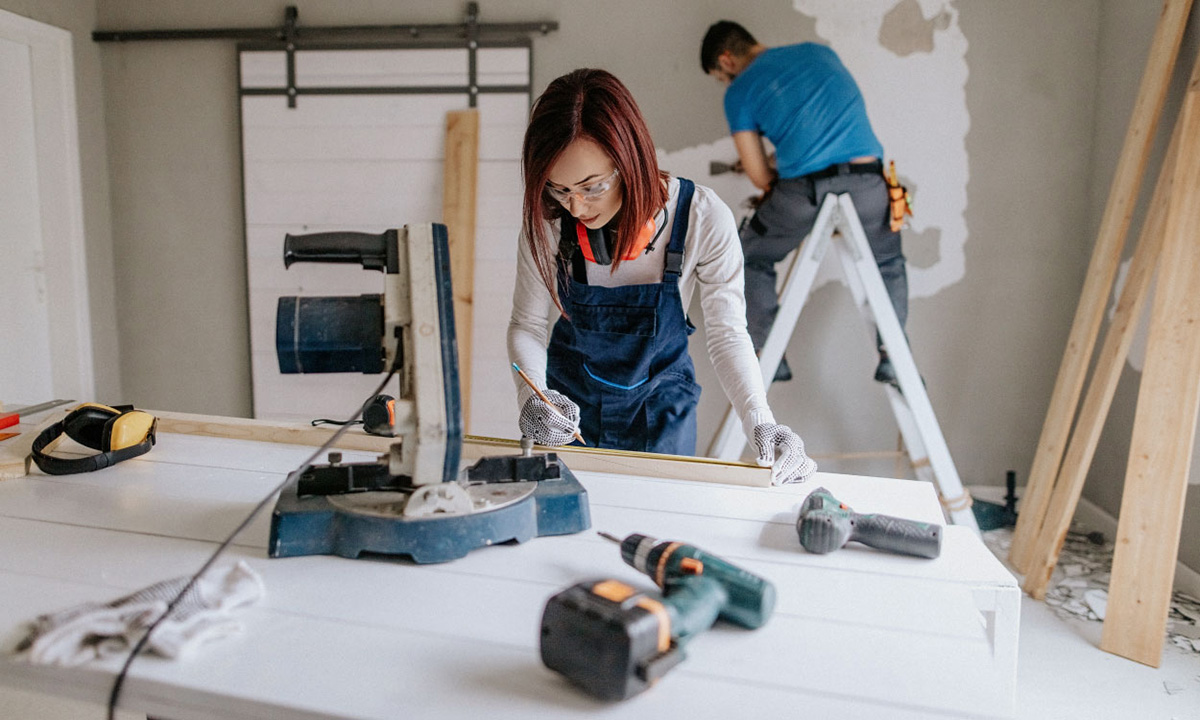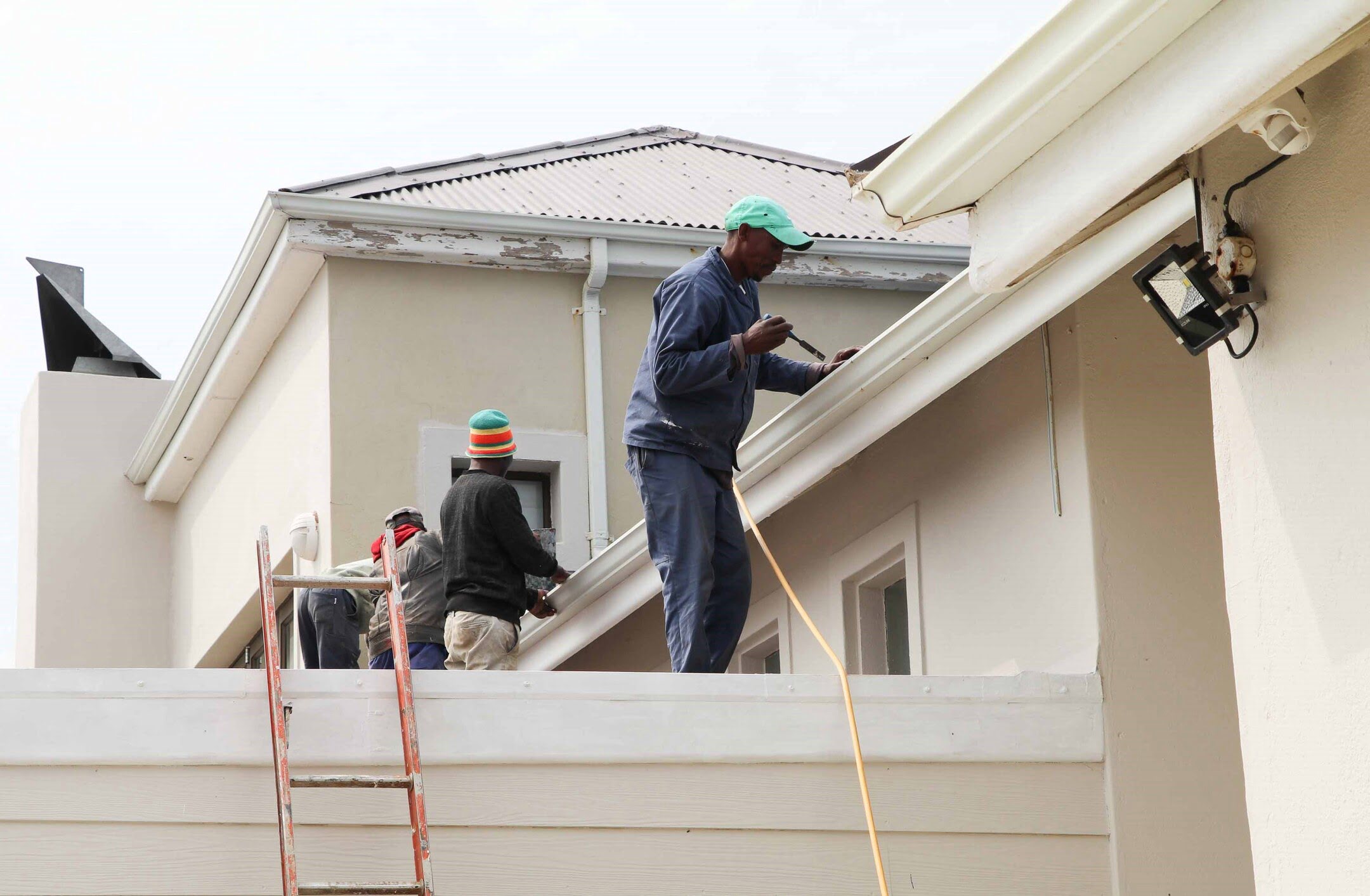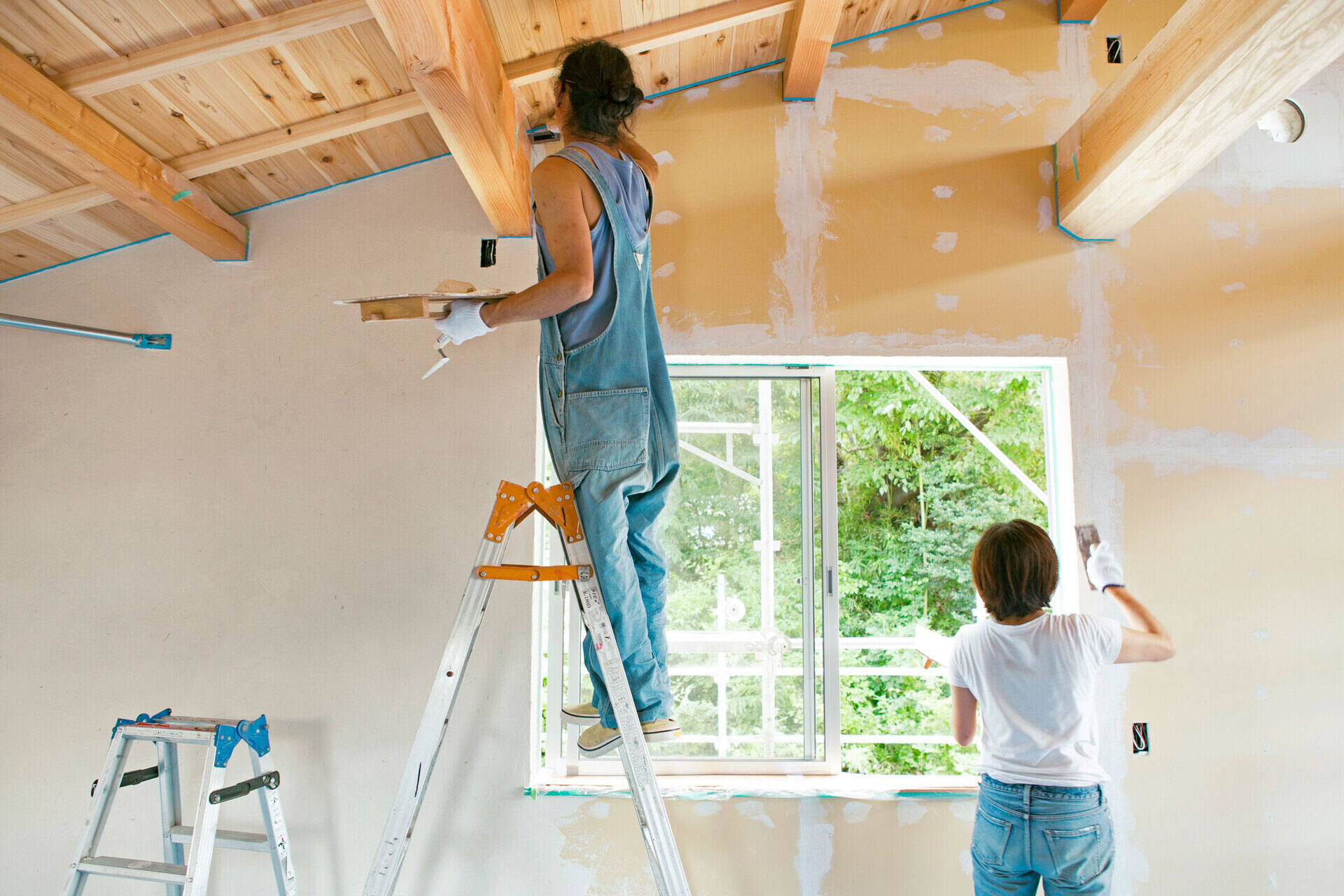Home>Renovation & DIY>Home Renovation Guides>When Doing Home Improvements, Where Does One Start?


Home Renovation Guides
When Doing Home Improvements, Where Does One Start?
Modified: October 20, 2024
Looking to start your home renovations? Our comprehensive home renovation guides will help you kickstart your project with confidence and ease. Explore expert tips, inspiration, and practical advice.
(Many of the links in this article redirect to a specific reviewed product. Your purchase of these products through affiliate links helps to generate commission for Storables.com, at no extra cost. Learn more)
Assessing Your Needs
Embarking on a home improvement project is an exciting endeavor, but before diving in, it’s crucial to assess your needs thoroughly. Begin by evaluating the areas of your home that require attention. Whether it’s a cramped kitchen, outdated bathroom, or a desire for additional living space, identifying your specific needs will lay the foundation for a successful renovation.
Consider the functionality and flow of your living space. Are there bottlenecks that hinder movement, or do certain areas lack natural light? Understanding these aspects will guide your renovation decisions.
Furthermore, take stock of your lifestyle requirements. If you love to entertain, creating an open-plan living area might be a priority. For a growing family, adding extra bedrooms or a play area could be essential. By aligning your renovation goals with your lifestyle, you can ensure that the changes will not only enhance your home’s aesthetics but also improve its functionality.
Assessing your needs also involves considering any structural issues or necessary repairs. Are there leaks, cracks, or electrical concerns that need attention? Addressing these foundational aspects is critical before moving on to cosmetic upgrades.
Lastly, don’t overlook the importance of future-proofing your home. Think about how your needs might evolve over time. Planning for potential future requirements, such as aging-in-place modifications or energy-efficient updates, can save you from costly retrofits down the line.
By thoughtfully assessing your needs, you’ll be better equipped to prioritize your renovation goals and make informed decisions throughout the process.
Key Takeaways:
- Assess your needs, set a budget, research options, and prioritize safety when starting a home improvement project. Small projects can build confidence, and evaluating results ensures satisfaction with the outcome.
- Whether hiring professionals or taking a DIY approach, obtaining permits, and maintaining a timeline, each step is crucial for a successful home improvement project. Safety considerations are paramount for a secure and efficient renovation.
Setting a Budget
When embarking on a home improvement project, setting a realistic budget is a crucial initial step. A well-defined budget not only helps to streamline the decision-making process but also ensures that your renovation stays on track financially.
Start by evaluating your current financial situation and determining how much you can comfortably allocate to the project. Consider factors such as savings, potential financing options, and any unexpected costs that may arise. It’s essential to set aside a contingency fund to account for unforeseen expenses that may crop up during the renovation.
Next, prioritize your renovation goals based on your budget. Identify the areas that require immediate attention and allocate funds accordingly. This approach can help prevent overspending on non-essential upgrades while ensuring that critical improvements are adequately funded.
Research the average costs associated with the type of renovation you’re planning. This can provide valuable insights into the expected expenses, allowing you to adjust your budget accordingly. Be sure to account for labor, materials, permits, and any additional fees that may apply.
It’s also important to factor in the potential return on investment (ROI) for the renovations. While it’s essential to create a space that meets your needs, considering the potential impact on the home’s resale value can help you make informed decisions about where to allocate your budget.
Throughout the budgeting process, maintain clear and open communication with contractors and suppliers. Obtaining multiple quotes and thoroughly researching material costs can help you make informed decisions and avoid unexpected financial surprises.
By establishing a well-defined budget and diligently managing expenses, you can approach your home improvement project with confidence, knowing that your financial resources are being utilized effectively.
Researching Options
Before diving into a home improvement project, it’s essential to thoroughly research your options to ensure that the end result aligns with your vision and meets your needs. This phase of the process involves gathering inspiration, exploring design possibilities, and identifying the most suitable materials and fixtures for your renovation.
Begin by seeking inspiration from various sources such as home renovation magazines, online platforms, and social media. Create a vision board or digital folder to compile ideas that resonate with your aesthetic preferences and functional requirements. This can help you articulate your preferences to designers, contractors, and suppliers.
Exploring design possibilities involves considering layout options, color schemes, and architectural features that can transform your space. Whether it’s a contemporary kitchen design, a spa-like bathroom retreat, or a versatile outdoor living area, researching design trends and innovative concepts can help you envision the potential of your home.
Identifying the most suitable materials and fixtures is a critical aspect of the research process. From flooring and countertops to lighting fixtures and hardware, understanding the durability, maintenance requirements, and aesthetic appeal of different options is essential. Consider factors such as eco-friendliness, energy efficiency, and long-term value when evaluating materials and fixtures for your renovation.
Furthermore, exploring technological advancements and smart home solutions can add a layer of innovation to your renovation. From energy-efficient appliances to automated lighting and climate control systems, integrating modern technologies can enhance the functionality and sustainability of your home.
Throughout the research phase, consider consulting with design professionals and contractors to gain valuable insights and recommendations. Their expertise can provide a deeper understanding of the possibilities available within your budget and help you make informed decisions that align with your vision.
By dedicating time to thorough research, you can approach your home improvement project with a clear understanding of the options available, ensuring that your renovation reflects your style, meets your needs, and integrates the latest innovations in home design.
Hiring Professionals vs. DIY
When undertaking a home improvement project, one of the key decisions to make is whether to hire professionals or opt for a do-it-yourself (DIY) approach. Both options have their merits, and the choice ultimately depends on factors such as the complexity of the project, your skill level, available time, and budget.
Hiring professionals offers the advantage of expertise and experience. Skilled contractors, architects, and designers bring a wealth of knowledge to the table, ensuring that the renovation is executed with precision and in compliance with building codes and regulations. Their insights can also lead to innovative solutions and high-quality craftsmanship, elevating the overall outcome of the project.
Additionally, enlisting professionals can save time and alleviate the stress associated with managing complex renovations. From obtaining permits and coordinating subcontractors to overseeing the project timeline, professionals can streamline the process, allowing you to focus on other priorities without sacrificing the quality of the results.
On the other hand, opting for a DIY approach can be rewarding for those with the necessary skills, time, and willingness to learn. DIY projects offer a sense of accomplishment and the opportunity to personalize every aspect of the renovation. From painting and simple installations to landscaping and minor repairs, tackling certain tasks independently can add a personal touch to the project.
However, it’s crucial to assess your capabilities realistically. Complex structural modifications, electrical work, and plumbing installations are best left to professionals to ensure safety and compliance. Prioritizing safety and adhering to best practices in construction and renovation is paramount when considering a DIY approach.
Hybrid approaches, where homeowners handle certain aspects of the project while hiring professionals for specialized tasks, can offer a balanced solution. This approach allows for cost savings while leveraging the expertise of professionals where it matters most.
Ultimately, the decision to hire professionals or pursue a DIY approach should align with your comfort level, skills, and the scope of the project. Whether you choose to enlist professionals, take on tasks independently, or adopt a hybrid approach, prioritizing quality, safety, and adherence to local regulations is essential for a successful home improvement project.
Obtaining Permits and Approvals
Before commencing any significant home improvement project, it’s essential to navigate the regulatory landscape by obtaining the necessary permits and approvals. Compliance with local building codes and regulations is crucial to ensure the safety, structural integrity, and legal adherence of the renovation.
Start by researching the specific permit requirements for your location and the scope of your project. Different jurisdictions have varying regulations regarding renovations, additions, and structural modifications. Understanding these requirements is fundamental to the success of your project.
Engage with your local building department or relevant authorities to obtain a comprehensive understanding of the permit application process. This may involve submitting detailed plans, engineering documents, and other relevant information to support your renovation proposal. Working closely with the authorities from the outset can streamline the approval process and prevent potential setbacks.
It’s important to note that certain renovations, particularly those involving electrical, plumbing, or structural changes, may require inspections at various stages of the project. Understanding the inspection process and ensuring compliance with building standards is essential to avoid delays and ensure the quality and safety of the renovation.
For larger-scale projects, such as additions or significant structural alterations, it may be necessary to engage the services of a professional architect or engineer to develop detailed plans and specifications. These documents are often required as part of the permit application and approval process, demonstrating that the proposed renovation meets all relevant building codes and standards.
While the permitting process may seem daunting, it serves as a safeguard to ensure that renovations are carried out to a high standard, protecting the well-being of occupants and the long-term value of the property. It also provides assurance that the renovation aligns with the broader community standards and zoning regulations.
By proactively addressing permit and approval requirements, you can embark on your home improvement project with confidence, knowing that the necessary regulatory considerations have been addressed. This proactive approach sets the stage for a successful and compliant renovation, providing peace of mind and ensuring that the results meet the highest standards of safety and quality.
Start with a thorough assessment of your home’s needs and prioritize the most essential improvements. Consider factors like safety, energy efficiency, and functionality to guide your decision-making process.
Starting with Small Projects
When contemplating home improvements, beginning with small-scale projects can yield significant benefits, both in terms of building confidence and enhancing the overall appeal and functionality of your living space. Small projects offer an accessible entry point into the world of home renovation, allowing you to gradually gain experience and momentum before tackling larger endeavors.
One of the key advantages of starting with small projects is the opportunity to experiment with different design concepts and techniques. Whether it’s refreshing a room with a new color scheme, upgrading fixtures, or implementing organizational solutions, these projects provide a platform for creativity and exploration without the overwhelming complexity of major renovations.
Small-scale improvements can also have a notable impact on the aesthetics and functionality of your home. Simple upgrades, such as installing new hardware, updating lighting fixtures, or refinishing surfaces, can breathe new life into spaces, creating a sense of renewal and revitalization.
Moreover, engaging in small projects allows you to develop valuable skills and familiarity with various aspects of home improvement. From basic carpentry and painting techniques to understanding the nuances of different materials and finishes, each small project serves as a learning opportunity, empowering you to take on more ambitious renovations with confidence.
These projects also provide a tangible sense of accomplishment and immediate gratification. Completing smaller tasks creates a sense of progress and momentum, motivating you to pursue further improvements and build on your successes. This incremental approach can alleviate the pressure often associated with larger renovations, fostering a positive and rewarding experience.
From a practical standpoint, starting with small projects allows for greater flexibility in terms of time and budget. It enables you to test ideas and refine your vision for the overall aesthetic and functionality of your home before committing to larger investments.
By embarking on small projects, you can gradually transform your living space, gain valuable experience, and set the stage for more extensive renovations in the future. This approach fosters a sense of creativity, accomplishment, and skill development, laying the groundwork for a fulfilling and successful journey in home improvement.
Safety Considerations
When undertaking home improvement projects, prioritizing safety is paramount to ensure the well-being of everyone involved and the long-term integrity of the property. Whether you’re embarking on a minor renovation or a significant overhaul, integrating robust safety measures is essential for a successful and secure project.
One of the foundational aspects of safety in home improvement is the proper use of personal protective equipment (PPE). This includes items such as safety goggles, gloves, masks, and appropriate footwear. Utilizing PPE can safeguard against potential hazards, such as airborne particles, sharp objects, and chemical exposure, reducing the risk of accidents and injuries.
Furthermore, understanding and adhering to best practices in construction and renovation is critical. This involves familiarizing yourself with proper tool usage, equipment operation, and safe work techniques. Whether you’re handling power tools, climbing ladders, or working with heavy materials, maintaining a diligent approach to safety protocols can mitigate the likelihood of accidents.
For projects involving electrical work, plumbing, or structural modifications, it’s advisable to engage the expertise of qualified professionals. These specialized tasks require a deep understanding of building codes, technical proficiency, and compliance with safety standards. Enlisting the services of licensed contractors and tradespeople ensures that these critical aspects of the renovation are executed safely and in accordance with regulations.
Prior to initiating any project, it’s essential to conduct a thorough assessment of the work area and identify potential hazards. This includes addressing issues such as asbestos, lead-based paint, mold, and structural weaknesses. Identifying and mitigating these risks is crucial for creating a safe and healthy environment for both occupants and workers.
In addition, maintaining a clean and organized work site contributes to overall safety. Clearing debris, securing loose materials, and establishing designated pathways can reduce the likelihood of trips, falls, and other accidents. Implementing proper waste disposal practices also contributes to a safer and more efficient work environment.
Lastly, staying informed about local regulations, building codes, and permit requirements is integral to ensuring that your renovation complies with safety standards. This proactive approach not only safeguards against potential liabilities but also promotes the long-term durability and value of the property.
By integrating comprehensive safety considerations into your home improvement projects, you can create a secure and conducive environment for renovation, fostering peace of mind and ensuring the successful and sustainable transformation of your living space.
Maintaining a Timeline
Effectively managing the timeline of a home improvement project is crucial for ensuring a smooth and efficient renovation process. From small-scale upgrades to extensive remodels, maintaining a well-defined timeline helps to keep the project on track, minimize disruptions, and achieve the desired results within a reasonable timeframe.
Begin by establishing a clear and realistic schedule for the renovation. This involves outlining the various phases of the project, setting milestones, and allocating time for each task. Consider factors such as material lead times, contractor availability, and any external dependencies that may impact the timeline.
Effective communication and coordination are essential for adhering to the established timeline. Regularly engage with contractors, suppliers, and other stakeholders to ensure that everyone is aligned with the project schedule. Addressing any potential delays or obstacles proactively can prevent timeline deviations and maintain the momentum of the renovation.
Flexibility is also key when managing a renovation timeline. While it’s important to adhere to the established schedule, unexpected challenges or revisions may arise during the course of the project. Building in buffer time and contingency plans can provide the necessary flexibility to accommodate unforeseen circumstances without derailing the overall timeline.
Furthermore, prioritizing tasks based on dependencies and critical path analysis can streamline the renovation process. Identifying the sequence of tasks that directly impact subsequent activities allows for efficient resource allocation and minimizes potential bottlenecks that could impede progress.
Technology can be a valuable asset in maintaining a timeline, particularly for larger and more complex renovations. Utilizing project management software, scheduling tools, and digital collaboration platforms can facilitate real-time tracking of tasks, milestones, and communication, enhancing transparency and accountability throughout the project.
Regular progress assessments and milestone evaluations are essential for monitoring the timeline and making necessary adjustments. This involves reviewing completed tasks, assessing upcoming milestones, and identifying any deviations from the original schedule. Addressing any potential issues promptly can prevent delays and keep the project on course.
Lastly, maintaining a positive and proactive mindset is instrumental in adhering to the timeline. Embracing challenges with resilience and a solutions-oriented approach can help mitigate potential setbacks and keep the project moving forward in a timely manner.
By diligently managing the timeline of your home improvement project, you can navigate the renovation process with efficiency and confidence, ensuring that the results are achieved within the expected timeframe and meeting your expectations.
Evaluating Results
Upon completing a home improvement project, it’s essential to conduct a comprehensive evaluation of the results to ensure that the renovation aligns with your vision, meets your expectations, and delivers the desired outcomes. This critical phase allows you to assess the success of the project and identify any areas that may require further attention or refinement.
Begin by conducting a thorough inspection of the renovated spaces, paying close attention to the quality of workmanship, functionality of installations, and overall aesthetic appeal. Assess the alignment of the results with the initial project goals and design concepts, identifying any discrepancies or areas that fall short of expectations.
Engage with all stakeholders involved in the project, including contractors, designers, and suppliers, to gather feedback and insights. Understanding their perspectives on the process and outcomes can provide valuable perspectives and help identify areas of excellence as well as potential areas for improvement.
Consider the practical functionality of the renovated spaces. Evaluate how well the design and layout enhance usability, flow, and convenience. Assess the integration of smart technologies, energy-efficient features, and sustainable materials to ensure that the renovation aligns with modern standards of comfort and efficiency.
Assess the overall impact of the renovation on the property’s value and market appeal. If the project was undertaken with resale value in mind, consider how the improvements have enhanced the property’s desirability and potential return on investment. This evaluation is particularly relevant for larger-scale renovations and additions.
From a budgetary standpoint, compare the actual expenses with the initial budget and assess the overall cost-effectiveness of the project. Identify any budget overruns, unexpected costs, or areas where cost-saving measures could have been implemented without compromising the quality of the results.
Furthermore, consider the long-term durability and sustainability of the renovation. Assess the quality of materials, finishes, and installations to ensure that the results are built to last and withstand the test of time. This evaluation is particularly important for renovations aimed at enhancing the property’s longevity and resilience.
Finally, reflect on the overall experience of the renovation process. Consider the level of satisfaction, the effectiveness of communication with contractors and suppliers, and any lessons learned that can inform future projects. This introspective evaluation can provide valuable insights for refining your approach to future home improvements.
By conducting a comprehensive evaluation of the results, you can ensure that the home improvement project has achieved its intended objectives, meets your expectations, and aligns with your long-term vision for your living space. This reflective process sets the stage for ongoing enjoyment and satisfaction with the renovated home.
Frequently Asked Questions about When Doing Home Improvements, Where Does One Start?
Was this page helpful?
At Storables.com, we guarantee accurate and reliable information. Our content, validated by Expert Board Contributors, is crafted following stringent Editorial Policies. We're committed to providing you with well-researched, expert-backed insights for all your informational needs.















0 thoughts on “When Doing Home Improvements, Where Does One Start?”